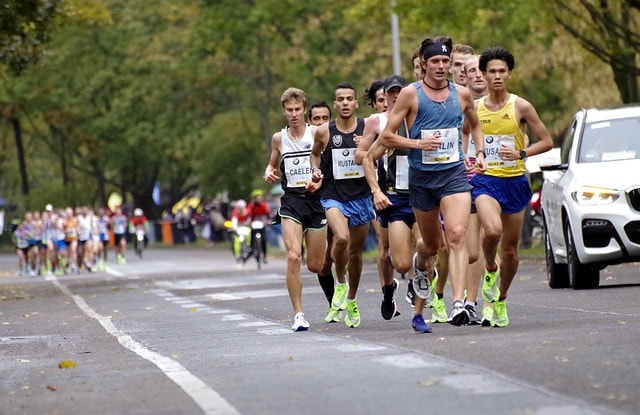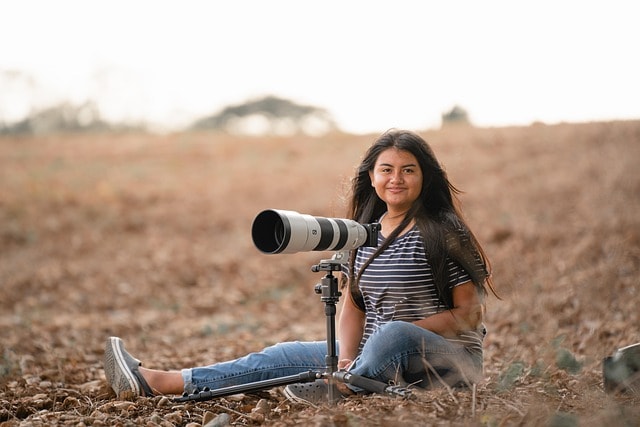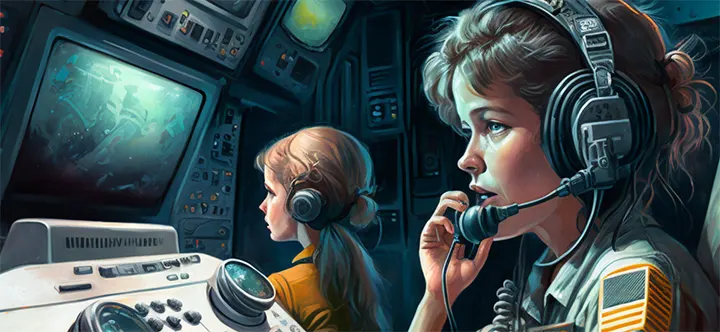The Best Hobbies & Interests for your CV in 2025 - With Examples
A well-chosen hobby can show off your personality traits, skills, and add that extra bit of job-relevant magic. Whether you’re a fresh grad with zero experience or a career changer highlighting your skills, the right hobbies can make your CV sparkle and help demonstrate your passion for your field!
In this guide from The CV Centre, we’ll uncover the best and most relevant hobbies to boost your CV, share examples to inspire you, and help you dodge the pitfalls that could land your application in the bin. Ready to level up your CV game? Let’s get started!
Table of Contents
-
Unpacking Hobbies and Interests for Your CV
-
Deciding If Hobbies Deserve a Spot on Your CV
-
Timing Hobbies Perfectly on Your CV
-
Building a Winning Hobbies Section Step by Step
-
Top Hobbies to Power Up Your CV in 2025
-
Inspiring CV Hobbies Examples
-
Smart Tips to Highlight Hobbies on Your CV
-
Wrapping Up: Hobbies That Win
-
Frequently Asked Questions (FAQs)
Unpacking Hobbies and Interests for Your CV
Hobbies and interests on your CV are activities you enjoy outside of work or studies that can reveal your personality, skills, and passions. They’re more than just “things you do for fun” - they’re a chance to show recruiters what makes you tick. A love for team sports might highlight your teamwork skills, while a passion for coding side projects can signal tech savvy.
In 2025, employers value candidates who bring a well-rounded application, and hobbies can bridge the gap between your professional qualifications and personal flair.
Deciding If Hobbies Deserve a Spot on Your CV
This doesn't mean reeling off a list of everything you like doing. We'll help you choose your hobbies and personal interests carefully.
When Hobbies Boost Your Application Power
Hobbies can add serious value to your CV when they showcase skills or traits relevant to the job. If you’re a recent graduate with little experience, hobbies like organising charity events can demonstrate leadership and teamwork.
For a creative role, listing photography or writing a blog can highlight your artistic flair.
If the job description mentions “team player,” mentioning your love for team sports like football can seal the deal. Hobbies also help you stand out in competitive fields by showing personality - think of them as a conversation starter that makes recruiters remember you as “the marathon runner” rather than just another applicant that fades into anonymity.

When to Bench Your Hobbies
Not every hobby belongs on your CV.
If you’re a mid-career professional with years of experience, hobbies might take up valuable space better used for achievements - unless they’re directly relevant. Skip generic or irrelevant hobbies like “watching TV” or “hanging out with friends,” as they add no value and can seem unprofessional.
Avoid controversial hobbies like extreme political activism, which might polarise recruiters. If your CV is already packed or the hobby doesn’t align with the job, leave it out. The goal is to keep your CV focused, so that each line keeps adding to the sentiment... “I’m the perfect fit!”
Not sure what to include? Try our free CV review!
Timing Hobbies Perfectly on Your CV
So how do you present hobbies and interests at different stages of your career?
Recent Grads and Entry Level Candidates
If you’re a recent graduate or entry-level candidate, hobbies can be a star player on your CV. With limited work experience, they fill gaps and show off those transferable skills that I always harp on about. For example, if you’re applying for a marketing role and you run a blog, that hobby shows off your creativity and digital know-how. Place hobbies prominently, after education, to give recruiters a fuller picture of your potential.
Mid-Career Pros
For mid-career professionals, hobbies should play more of a supporting role. Your work experience takes centre stage, but a carefully chosen hobby can add depth. If you’re in finance and play chess competitively, it shows strategic thinking - a perfect match for the role.
List hobbies at the CV’s end, keeping them brief to avoid cluttering your professional achievements. Only include them if they enhance your candidacy, like volunteering for a leadership role that aligns with your career. Hobbies here should complement your experience, not steal the spotlight from your employment history.
Career Changers
Career changers can use hobbies to bridge the gap between their past and new career path. If you’re moving from finance to marketing, a hobby like running a photography Instagram account can show creativity and digital skills. For a tech role, mentioning coding side projects can prove you’ve got the chops, even if your experience is in another field. Place hobbies after your skills or experience, tailoring them to the new role’s requirements.

Building a Winning Hobbies Section Step by Step
Still not sure what to do. Let's walk you through how to include hobbies on your CV. It's as simple as 1, 2, 3!
1. Finding the Right Place for Hobbies
Your hobbies section should live at the end of your CV, after education and experience, unless you’re a recent graduate - then it can follow education to add depth to your academic achievements. Keep it separate, labelled simply as “Hobbies” or “Interests,” to make it easy for recruiters to find. Don’t bury hobbies in your work experience or skills sections; they need their own space as, ultimately, they are secondary to your professional experience.
2. Formatting the Hobbies and Interests Section
Format your hobbies section as a concise, scannable list—no long paragraphs! Use bullet points and keep descriptions short, ideally 5–10 words each, like “Photography – Run a blog with 1,000 monthly views.” Avoid vague terms like “reading” - be specific, e.g., “reading historical fiction.” This keeps the section tidy and professional, ensuring it doesn’t overshadow your qualifications.
3. Matching Hobbies to Job Needs
Tailor your hobbies to the job description for maximum impact. You can focus on picking out some of the keywords that the pesky ATS system loves! If the role requires creativity, highlight “writing short stories” or “amateur graphic design.” For a leadership-focused role, mention “captain of a local football team.”
Check the job ad for skills like “teamwork” or “problem-solving,” then choose hobbies that reflect those traits - like team sports or chess. If you’re applying for a tech role, “coding personal apps” can show relevant skills.
Top Hobbies to Power Up Your CV in 2025
Still feeling stumped? We'll now give you some hobbies that match various careers.
Soft Skills Champions Showing Teamwork and Leadership
Team sports like football or rugby highlight teamwork and leadership - perfect for roles requiring collaboration. Example: “Football team captain, leading 15 players to a regional championship.”
Volunteering, such as organising community events, shows initiative and communication skills. Example: “Volunteer event planner, coordinating 50+ attendees for charity fundraisers.”
These hobbies prove you’ve got the interpersonal skills employers crave, like adaptability and emotional intelligence, making you a well-rounded candidate for any team-focused role.
Tech Savvy Hobbies Highlighting Digital Skills
Coding side projects, like building apps or websites, show technical skills. Example: “Developed a personal finance app using Python.”
Gaming can highlight problem-solving if tied to strategy games like chess online. Example: “Competitive chess player, ranked top 5% on Chess.com.”
Hobbies like robotics or 3D printing demonstrate innovation. Example: “Built a 3D-printed robot for a tech fair.”
These hobbies signal you’re up to speed with 2025’s ever-evolving tech demands, making you a strong fit for roles requiring digital expertise.

Creative Hobbies for Artistic Roles
Photography can show an eye for detail. Example: “Amateur photographer, running an Instagram page with 2,000 followers.”
Writing a blog highlights content creation skills. Example: “Blogger on sustainable fashion, averaging 1,000 monthly views.”
Painting or illustration showcases artistic talent. Example: “Illustrator, selling prints at local markets.”
These hobbies prove you’ve got the creative spark needed for artistic industries. Other creative pursuits, such as playing a musical instrument, can really aid your application for these roles.
Strategic Hobbies for Business Minds
Investing as a hobby highlights financial acumen. Example: “Avid investor, managing a £5,000 portfolio with 10% returns.”
Debate club participation shows communication and critical thinking. Example: “Debate club member, winning regional competitions.”
These hobbies align with the strategic mindset needed for business roles, proving you can think ahead and make smart decisions in high-stakes environments. And chess too, but we've already mentioned that!!
Compassionate Hobbies for Healthcare and Education
Volunteering at a hospital reflects care and dedication. Example: “Hospital volunteer, supporting 20+ patients weekly.”
Mentoring kids in after-school programs highlights teaching skills. Example: “Mentor for STEM club, guiding 15 students in science projects.”
Yoga or mindfulness practices show emotional intelligence. Example: “Certified yoga instructor, leading weekly classes for stress relief.”
These hobbies demonstrate the desire for community involvement and compassionate, nurturing qualities essential for healthcare and education.
Inspiring CV Hobbies Examples
Let's put some of this malarkey into practice!
Marketing Rookie
Running a lifestyle blog, amateur photography, social media content creation
A marketing graduate might list some of the following: “Manage a lifestyle blog with 500 monthly views, focusing on sustainable living. Amateur photographer, posting on Instagram with 2,000 followers. Create social media content for local charities, boosting engagement by 15%.”
These hobbies show creativity, digital skills, and content creation - perfect for a marketing role.
Finance Pro
Competitive chess, personal investing, volunteering as a treasurer
A finance manager could include: “Competitive chess player, winning 3 local tournaments. Actively invest in stocks, managing a £10,000 portfolio with 12% annual returns. Volunteer treasurer for a community group, overseeing a £5,000 budget.”
These interests highlight strategic thinking, financial acumen, and organisational skills, aligning with finance roles.

Creative Career Shifter
Writing short stories, graphic design, running a YouTube channel
A career changer moving into design might list: “Write short stories, published in local magazines. Self-taught graphic designer, creating logos for small businesses. Run a YouTube channel on art tutorials, with 500 subscribers.”
These hobbies showcase creativity and digital skills, proving readiness for a position where creative skills are required, in spite of a non-creative employment background.
Smart Tips to Highlight Hobbies on Your CV
Be Precise with Hobby Details
Vague hobbies like “reading” don’t impress - be specific. Instead, say “reading historical fiction, focusing on World War II narratives.” If you play sports, mention your role: “Captain of a local rugby team, leading 15 players.” Specificity shows depth and relevance, making your hobbies meaningful. Example: “Hobbies: Blogging on tech trends, averaging 500 monthly views.”
Show Results with Numbers
Quantify your hobbies to add impact. Instead of “marathon running,” say “Completed 3 marathons, raising £1,000 for charity.” For creative hobbies, include metrics: “Photography, with 2,000 Instagram followers.” Numbers make your hobbies concrete, showing recruiters tangible achievements. This approach turns a simple hobby into a powerful testament to your dedication and skill!
Maintain a Professional Vibe
Keep hobbies professional - avoid quirky or casual phrasing like “chilling with mates.” Use formal language: “Hobbies: Competitive chess, mentoring youth.” Ensure hobbies align with the job’s tone; for a corporate role, “strategic board games” beats “video gaming.” This keeps your CV polished, ensuring hobbies enhance your image without risking a too-casual vibe that might turn recruiters off.
Wrapping Up: Hobbies That Win
Hobbies can be the cherry on top of your CV, showcasing skills, personality, and fit for the role. Choose hobbies that align with the job, whether they highlight teamwork, creativity, or strategic thinking. Format them concisely at the CV’s end, tailoring them to pass ATS and impress recruiters. Avoid irrelevant or unprofessional hobbies to keep your CV sharp. With the right hobbies, you’ll stand out as a well-rounded candidate with lots of interviews in your calendar.
Let your hobbies tell your story - make them count!
Need help crafting a CV that shines? The CV Centre’s Graduate CV Writing Service can help you add hobbies that win for any dream role.
Get in touch today and start landing interviews!
Frequently Asked Questions
Should I Include Hobbies If I Have a lot of Work Experience?
If you have extensive work experience, hobbies are optional and should only be included if they’re stricrtly relevant. For example, a finance manager might list “competitive chess” to show strategic thinking. Focus on achievements first, adding hobbies at the CV’s end to complement your skills without taking up valuable space.
How many Hobbies Should I List on my CV?
List 2–4 hobbies on your CV to keep it concise and impactful. Too many, like “hiking, cooking, gaming, knitting,” can overwhelm recruiters. Choose hobbies that align with the job so that they add value, especially to space-limited applications.
Can I Include Hobbies That Aren’t Directly Related to the Job?
Yes, but only if they showcase transferable skills. For a tech role, “yoga” might show stress management: “Hobbies: Yoga, improving focus.” Unrelated hobbies like “watching TV” add no value and should be skipped. Ensure hobbies indirectly support the role’s needs, adding personality without seeming out of place on your CV.
Should I Mention Hobbies in my Cover Letter as well?
Yes, mention hobbies in your cover letter if they’re relevant and add value. For a creative role, note: “My hobby of photography enhances my eye for design.” Keep it brief, tying the hobby to the role’s skills. This reinforces your CV’s hobbies section, showing consistency and passion without overloading the letter.
Should I Include Hobbies if I’m Applying for a Senior-level Role?
For senior-level roles, hobbies are rarely needed unless they add strategic value. A CEO might list “mentoring startups” to show leadership: “Hobbies: Mentoring startup founders.” Otherwise, focus on achievements—hobbies can seem trivial at this level. Include them only if they align with the role’s demands, placing them discreetly at the CV’s end.

